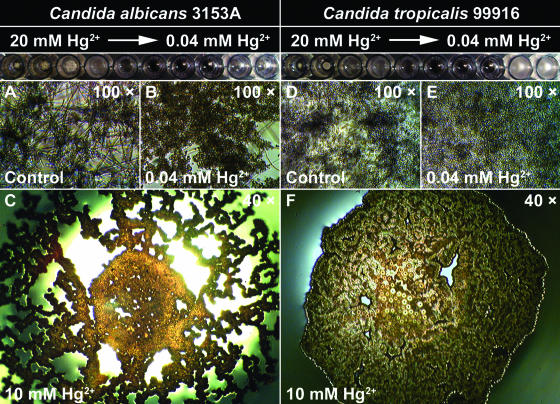FIG. 2.
C. albicans 3153A and C. tropicalis 99916 undergo multiple shifts in growth rate and biofilm community structure when cultivated in a concentration gradient of divalent mercury cations (Hg2+). Biofilms were grown in RPMI 1640 plus l-glutamine plus 0.165 M MOPS in microtiter plates for 48 h at 35°C on a gyratory shaker. Pictured at the top of each column is a row from a microtiter plate that contained a log2 concentration gradient of Hg2+ (ranging from 20 mM to 0.04 mM). (A and D) Untreated C. albicans 3153A and C. tropicalis 99916 biofilms contained yeast cells interspersed with hyphae. (B and E) C. albicans 3153A or C. tropicalis 99916 biofilms cultivated in as little as 0.04 mM Hg2+ consisted of yeast cells only. (C and F) As the concentration of Hg2+ increased, C. albicans 3153A and C. tropicalis 99916 gradually abandoned solid-surface attachment, and at ≥10 mM Hg2+, these microorganisms formed a pellicle of yeast cells at the air-liquid interface.

